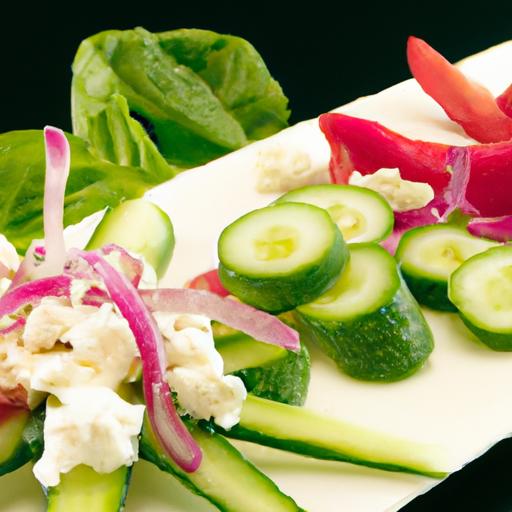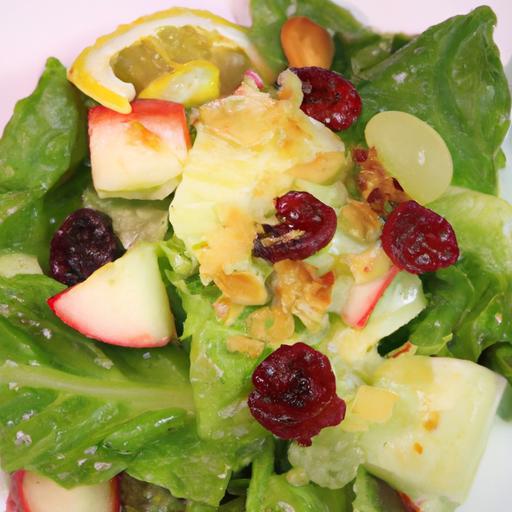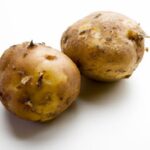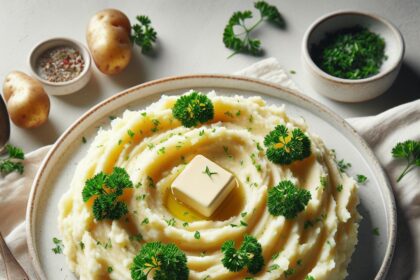There’s something undeniably satisfying about prepping salads ahead of time-vibrant greens neatly packed, crisp veggies ready to crunch, and dressings waiting in little containers for a quick, healthy meal on-the-go. Yet, despite all this careful preparation, many of us open these prepped salads to find limp, wilted leaves that seem to have lost their very essence. Why does this happen? What mysterious forces turn our once-crisp salads into soggy disappointments? In this article, we’re diving deep into the science and secrets behind wilting, demystifying the surprisingly complex journey from freshness to fatigue. Prepare to uncover the why and how so you can keep your prepped salads fresh, bright, and delicious-just the way you intended.
Understanding the Science Behind Salad Wilting
Why do my prepped salads wilt? Unlocking the secrets starts with understanding the delicate cellular structure of leafy greens. Each leaf is made of water-filled cells, tightly packed to create crispness. Once cut or bruised, these cells begin to lose moisture and collapse, causing wilting. This natural dehydration accelerates when exposed to oxygen, enzymes, or warmth after preparation.
Common Culprits That Cause Prepped Salads to Lose Crispness
Several factors steal the vibrant crunch from your perfectly prepped salads. Residual moisture is a primary villain-tiny droplets create a soggy environment where bacteria flourish, rapidly breaking down plant tissues. Additionally, using acidic dressings too soon kicks off enzymatic reactions, softening leaves prematurely. Even improper washing techniques can damage delicate greens, inviting wilting. Lastly, mixing incompatible ingredients like tomatoes or cucumbers release excess water, diluting your salad’s structure.
Smart Storage Techniques to Keep Your Salads Fresh Longer
Preserving salad freshness is a science and art. After washing, ensure leaves are thoroughly dried-using a salad spinner or clean kitchen towels is ideal. Store prepped greens in airtight containers layered between absorbent paper towels to wick away excess moisture. Keep them chilled between 34°F and 38°F in the fridge crisper drawer. For extended crispness, avoid dressing the salad until moments before serving. Using containers with slight ventilation can prevent condensation buildup, striking the perfect moisture balance.
Selecting the Right Greens and Ingredients for Maximum Longevity
Choosing salad ingredients wisely can transform your prep game. Hearty greens like kale, romaine, and Swiss chard withstand storage well and maintain crunch longer than tender varieties such as arugula or butter lettuce. Incorporate robust vegetables like bell peppers and carrots that hold texture. For herbs, hardy parsley or cilantro keep their vibrance better than delicate basil. Opt for firm, dry produce and keep watery fruits or veggies separate to prevent wilting.
Prep and Cook Time
Prep Time: 15 minutes | Cook Time: None (fresh prep)
Yield
Serves 4 – perfect for meal-prepping lunch or a light dinner
Difficulty Level
Easy – perfect for salad novices and seasoned home cooks
Ingredients
- 4 cups sturdy romaine lettuce, chopped and washed
- 2 cups kale leaves, ribs removed and chopped
- 1 cup shredded carrots, rinsed and dried
- 1 cup thinly sliced bell peppers (red or yellow)
- ½ cup cherry tomatoes, kept whole and dried
- ¼ cup chopped parsley or cilantro
- 2 tablespoons extra virgin olive oil (add just before serving)
- 1 tablespoon fresh lemon juice or apple cider vinegar
- Salt & pepper to taste
Instructions
- Wash and dry all greens and vegetables thoroughly. Use a salad spinner to remove excess moisture, then lay on a clean towel for final drying.
- Chop and prepare all ingredients, keeping watery vegetables such as tomatoes separate from greens.
- Layer the salad in an airtight container, starting with kale and romaine at the bottom, followed by carrots, bell peppers, and herbs on top. Place cherry tomatoes in a separate small container.
- Store with a clean paper towel layered on top to absorb moisture. Seal the container and refrigerate immediately.
- Just before serving, combine the salad and tomatoes in a bowl. Drizzle with olive oil and lemon juice or vinegar, and season with salt and pepper. Toss gently but thoroughly to coat.
- Serve immediately for maximum freshness and crunch.
Tips for Success
- Always dry greens completely after washing; water is the enemy of crispness.
- Store salad components separately if possible; this prevents cross-moisture and maintains texture.
- Add dressing just before serving to avoid enzymatic breakdown and sogginess.
- Try using a breathable produce bag or container with vent holes to balance humidity.
- Swap kale or romaine with sturdy baby spinach for variation-just remember spinach wilts faster, so consume sooner.
Serving Suggestions
Dress your salad with a sprinkle of toasted nuts, crumbled feta, or a handful of fresh herbs like basil or mint to add dimension and freshness. Present on a rustic wooden board for a captivating visual contrast or serve in chilled glass bowls to accentuate crispness. Pair with a glass of chilled white wine or a light vinaigrette to brighten flavors without overpowering.

Nutritional Information
| Calories | Protein | Carbs | Fat |
|---|---|---|---|
| 150 | 5g | 15g | 8g |
For more tips on keeping produce fresh, visit USDA’s official guide. Explore related meal-prep ideas in our Healthy Meal Prep Ideas post.
Q&A
Q: Why do my prepped salads wilt so quickly after I make them?
A: Ah, the dreaded wilt – but don’t blame your chopping skills! Wilt happens because once greens are cut or torn, their cellular walls get damaged. This damage causes moisture to escape, leading to limp leaves. Also, exposure to air and warmth accelerates water loss and enzymatic activity that breaks down freshness. Think of your salad leaves as tiny, delicate sponges; once squeezed and left out, they lose their bounce.
Q: Does washing salad greens before storage cause them to wilt faster?
A: It’s a double-edged sword. Washing removes dirt and potential bacteria but adds extra moisture, which can encourage sogginess and faster spoilage if not dried properly. However, if you don’t wash them, residual dirt can also degrade freshness. The key: wash thoroughly, then dry greens completely using a salad spinner or clean towel before storing.
Q: How does the storage environment affect salad wilting?
A: Storage is everything! Greens prefer cold, high-humidity environments. Refrigerators typically dry out leafy greens if stored without moisture control, causing them to lose crispness. Conversely, too much moisture can lead to rot. Using airtight containers with a paper towel to absorb excess water creates a balanced microclimate to keep your salad crisp and lively.
Q: Can the type of salad greens influence how fast they wilt?
A: Absolutely. Some greens, like spinach and arugula, are more delicate and wilt faster. Heartier greens such as kale and romaine have sturdier leaves and hold up better for prepping and storing. Knowing your greens’ personalities helps you treat them right – those tender leaves require gentle handling and quicker consumption.
Q: Are there any tricks to keep prepped salads from wilting?
A: Yes! Here’s the secret sauce: prep your salad close to mealtime when possible; keep washed greens cold and dry in sealed containers lined with paper towels; add dressing just before eating rather than beforehand (dressing accelerates wilting); and consider storing leafy greens with a slice of bread or a damp paper towel to maintain humidity. These small touches extend freshness and keep your salad crisp and inviting.
Q: Does the way I cut or tear salad greens influence wilting?
A: It does! Torn leaves tend to suffer less bruising than knife-cut ones because tearing follows natural leaf structure, causing less cellular damage. Less damage means less moisture loss and a longer life. So channel your inner artisan and give your greens a gentle tear, not a harsh chop.
Q: Why does salad dressing make prepped salads wilt so fast?
A: Dressing is often acidic and salty, which draws moisture out of the leaves-a process called osmosis. This dehydration weakens the cellular structure of the leaves, turning crisp salad into sad slop. To keep things fresh, toss your dressing right before eating, saving the salad’s crunch for last.
In Summary
In the grand salad saga, wilting leaves are the unexpected villains, turning crisp dreams into soggy realities. But now, equipped with the science behind salad prep-the moisture missteps, storage secrets, and timing tactics-you hold the power to keep your greens gloriously fresh. So next time you assemble a salad ahead of time, remember: it’s not just about chopping and tossing, but preserving a vibrant crunch that lasts. With a little know-how, you can say goodbye to wilt and hello to salad perfection, every bowl, every time. Happy prepping!








